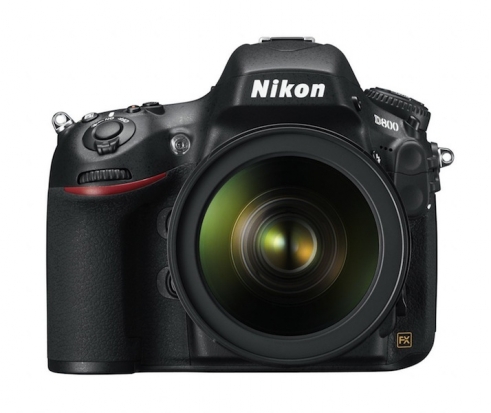
Nikon's D800: best over all camera 2012-2013
Righty-ho, the European Imaging and Sound Association (also known by the slightly more speaker-friendly term 'EISA') awards announcements took place this week, but so far the winners seem to have dribbled forth somewhat unsatifactorily, rather than presented themselves in a victorious flourish. So I thought that I'd rectify that as far as the photo awards were concerned. (There are other categories, too, like in-car electronics and green and whilst they might be interesting, this is a photography website.)
Actually, before I get on to the awards, in case you're wondering just who or what EISA is, and by what sort of authority they decide that this camera is better than that one, it's a group of 50 special interest magazines from 20 different countries. It's the likes of Amateur Photographer from the UK and Focus from the Netherlands who discuss winners and losers.
Okay, enough whitter, more winners.
The overall best camera for 2012-2013 was judged to be the Nikon D800. The judges thought that its resolution rocked, that its dynamic range and noise levels at high ISO were uncompromised, its 51-point autofocusing mechanism (the same as in the D4) was superb, and for the price it represented super value. Canon has held the top overall spot for the past two years, so Nikon might be smiling to itself about now.
However, Canon was by no means empty-handed. Its 5D MkIII waltzed off with the Advanced SLR prize and the Powershot G1X was named best overall compact camera, with the judges stating that its image quality can compete with many dSLRs. The gushing praise for the G1X was in strange contrast to the 5D MkIII; its blurb reads as if the judges knew it needed to win, but couldn't quite determine why.
The D800 wasn't Nikon's only success, either. The D4 was named as the professional SLR of choice, for its outstanding image quality, even in difficult shooting conditions, low noise, super-fast autofocusing capability, and a rugged design.
Meanwhile, over all favourite SLR went to the Sony SLT-A57. For the price it offers an impressive spec, great image quality, and is the perfect base for Sony to build on, and importantly, for photographers to progress.
Sony made the grade in two other categories: best travel compact went to the Cyber-shot HX20V and best advanced compact was the hot new RX-100. Sony has performed consistently well with its compacts at EISA, which suggests that it's getting something right there. Best tough compact went to the Olympus TG-1.
The spoils for the EVIL cameras were shared between Fujifilm, Olympus, and Samsung. (Be warned: each camera will now sound as if it belongs to a comic book super-villain clan.) The Fujifilm X-Pro1 was named as best professional EVIL on the basis of its exceptional lens, great build, and revolutionary sensor design. The overall best EVIL was the Olympus OM-D E-M5, with the judges seeming to love its homage to cameras of yesteryear. Finally, the advanced EVIL title went to the Samsung NX20.
As for the lenses, the winners were Sigma, Tamron, and Panasonic. Sigma for its 150mm ƒ/2.8 Macro; Tamron for the 24-70mm ƒ/2.8; and Panasonic for its Lumix G Vario 12-35mm ƒ/2.8. (ƒ/2.8 is the new black, clearly.)
Last but not least, Adobe's Lightroom 4 was given the honours as best editing suite.
Now, whether or not any of these awards will influence your purchasing at all, I have no idea. I shan't be going out to buy a Nikon D800 because 50 magazine editors said it was awesome. But I suppose it's a bit like the Oscars: just because it might not make a huge deal of difference other than being able to stick an 'I am an award winner' label on the box, it's always lovely to get a seal of approval.





